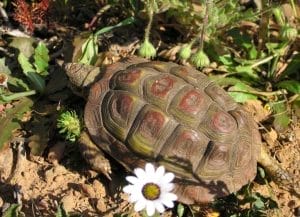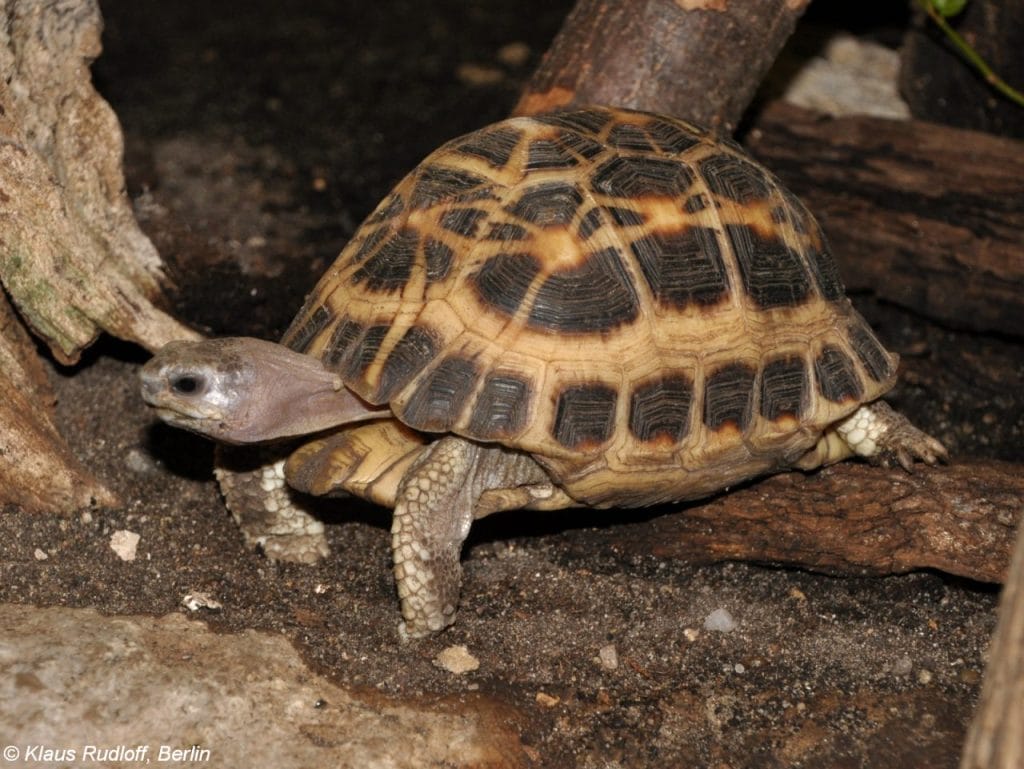Homopus femoralis (Greater Padloper)
Home > Turtle Database > Homopus femoralis (Greater Padloper)
Homopus femoralis, commonly known as the Greater Padloper or Karoo Dwarf Tortoise, is one of the smallest tortoise species in the world. Endemic to South Africa, this petite reptile is adapted to the arid environments of the Karoo region, showcasing unique characteristics that have piqued the interest of herpetologists and conservationists alike.
Native Turtle Species Map – Find Turtles by Region
Scientific Classification
- Kingdom: Animalia
- Phylum: Chordata
- Class: Reptilia
- Order: Testudines
- Family: Testudinidae
- Genus: Homopus
- Species: H. femoralis
Common Names
- Greater Padloper
- Karoo Dwarf Tortoise
This Hilarious Turtle Book Might Know Your Pet Better Than You Do
Let’s be real—most turtle care guides feel like reading a textbook written by a sleep-deprived zookeeper.
This one’s not that.
Told from the snarky point of view of a grumpy, judgmental turtle, 21 Turtle Truths You’ll Never Read in a Care Guide is packed with sarcasm, sass, and surprisingly useful insights.
And hey—you don’t have to commit to the whole thing just yet.
Grab 2 free truths from the ebook and get a taste of what your turtle really thinks about your setup, your food choices, and that weird plastic palm tree.
It’s funny, it’s honest, and if you’ve ever owned a turtle who glares at you like you’re the problem—you’ll feel seen.
Identification
Description
Homopus femoralis is a small tortoise, with adults typically reaching lengths of 10–15 cm (4–6 inches). It has a relatively flat, oblong carapace that is usually brown to reddish-brown, often featuring darker markings. The scutes may display growth rings, and the shell texture can be somewhat rough. Its limbs are stout with scaled skin, adapted for navigating rocky terrains.
Sexual Dimorphism
Males and females can be distinguished by size and tail length. Females are generally larger than males, while males possess longer, thicker tails. Additionally, males may exhibit a slightly concave plastron (the underside of the shell) to facilitate mating.
Check more turtles from the Homopus genus
Native Origin and Distribution
Geographical Range
This species is endemic to South Africa, primarily found in the central and eastern parts of the Karoo region. Its range includes areas within the Free State, Northern Cape, and Eastern Cape provinces.
Preferred Habitat
Homopus femoralis inhabits arid and semi-arid environments characterized by rocky outcrops, shrublands, and grasslands. The tortoise prefers habitats with ample cover, such as bushes and rocks, which provide shelter from predators and extreme weather conditions.
Behavior
Feeding Habits
As an herbivore, the Greater Padloper feeds primarily on a variety of succulent plants, grasses, and leaves available in its arid habitat. It has adapted to survive on limited water sources, obtaining moisture from its food.
Predators
Predators include birds of prey like eagles and hawks, as well as mammals such as jackals and mongooses. The tortoise’s small size makes it vulnerable, so it relies on camouflage and shelter for protection.
Reproduction
Breeding Season
The breeding season typically occurs during the warmer months, from spring to early summer (September to December).
Reproductive Method
Females lay one to three eggs per clutch, often in shallow nests dug in sandy soil. Incubation periods can vary but generally last several months, with hatchlings emerging when conditions are favorable.
Conservation
Extinction Status
Homopus femoralis is classified as Least Concern on the IUCN Red List.
Threats
Major threats include habitat destruction due to agricultural expansion and overgrazing by livestock. Collection for the pet trade, road mortality, and predation by introduced species also pose significant risks.
Conservation Measures
Conservation efforts focus on habitat protection, legal protection from collection and trade, and public education. Protected areas within its range help preserve critical habitats, and research is ongoing to better understand its ecology and population dynamics.
Economic Importance
The species has minimal direct economic importance. However, it holds ecological value as part of South Africa’s biodiversity and may contribute to eco-tourism and educational activities centered on wildlife conservation.
Interesting Facts
- Tiny Size: Homopus femoralis is one of the smallest tortoise species, with adults small enough to fit in the palm of a human hand.
- Name Origin: The name “Padloper” is Afrikaans for “path-walker,” reflecting the tortoise’s terrestrial habits.
- Elusive Nature: Due to its elusive behavior and camouflaged appearance, it is rarely seen in the wild, making sightings special for enthusiasts.

About Author
Muntaseer Rahman started keeping pet turtles back in 2013. He also owns the largest Turtle & Tortoise Facebook community in Bangladesh. These days he is mostly active on Facebook.













